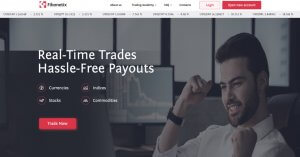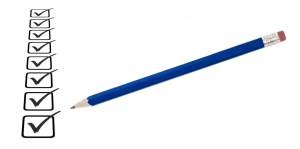Forex brokerages aren’t always transparent about some of their costs. Many use sleek, impressive websites to make themselves seem more legitimate, which keeps some of their potential clients from reading the fine print. Don’t let us scare you – trustworthy brokers are out there, but it is important for traders to understand how to spot scammers. One of the most common things that brokers try to hide are unfavorable fees.
We’ll start with two fees that should be advertised transparently, although some brokers try to hide these fees if they are unfavorable.
Spreads
The spread is the difference between the bid and ask price on a trade. This is how most forex brokers make their profit, alongside commissions. The amount of the spread can vary widely, but the average spread on the pair EURUSD is around 1.5 pips. Anything above 2 pips on this pair is quite high, while anything of 1 pip or below is favorable. It’s common practice for brokers to offer lower spreads on accounts that require larger deposits. However, some brokers try to hide their spreads, or they don’t list them on their websites at all. This is a sign that the spreads are high, and traders should run in the other direction. While spreads should be listed transparently on every broker’s website, this isn’t always the case with some scammers.
Commissions
Most brokers charge commission fees unless they have high spreads to make up for them. Just like with spreads, this is something that should be clearly advertised on the broker’s website. If a broker doesn’t charge commission fees, this is something that they should also advertise on their website. If you can’t find any information about commissions, then chances are that high commission fees are applicable.
Now that we’ve covered two of the main brokerage fees, we will move on to the charges that aren’t usually presented transparently on the broker’s website. It’s easy to find a broker that doesn’t charge any of the following fees, aside from withdrawal fees.
Deposit/Withdrawal Fees
There are brokers out there that offer fee-free deposits and withdrawals, although most charge some type of fee. Most commonly, deposits do not carry charges, but withdrawals do. Our advice would be to look for a broker that charges one or the other and to be sure that those charges are listed transparently. If the broker doesn’t even have a funding/payment methods page or information on their website, then there is no telling how high those fees may go. For example, some brokers charge fees of 7% on debit/credit card withdrawals. If you’re withdrawing $1,000, then you’d be looking at a steep fee of $70. If you can’t find a brokerage offering fee-free withdrawals, look for one with fees of around 1-3% on your preferred funding method, or look for fee caps of around $30 so that you don’t get charged a crazy amount.
Inactivity Fees
Many brokerages that charge inactivity fees list those fees somewhere on their website, possibly under their terms & conditions. Unfortunately, many traders don’t take the time to look over those sections of the website or they don’t read it thoroughly, so this can be easy to miss. Inactivity fees are charged on trading accounts that haven’t had any trading activity for a certain amount of time. Some brokers begin to charge those fees after 30 days with no activity, up until the account has been reduced to $0. Others give traders a little more time, around 3-6 months before they start charging them. The exact amount of the charge can vary widely, from $0 to $100 or more, sometimes increasing with longer periods of inactivity. Inactivity fees are only charged on accounts that have a remaining balance; they will never make your account go into the negative. This is a way for brokers to wipe out any remaining balance on the account.
Fees for Withdrawing with no Trading Activity
If you fund your trading account and then change your mind and decide to make a withdrawal (without any trading activity), be careful. Some brokerages will charge you a fee for doing this. We’ve seen fees in the $30 range, but some will charge a high percentage of the amount you originally deposited. These fees are often hidden under a broker’s terms & conditions, although more transparent brokers might list them on their main funding page.
Maintenance Fees
Most brokers don’t charge maintenance fees because they understand that this is obviously an unnecessary charge that will anger their clients. This is basically like an unnecessary charge your home phone or internet provider might throw on your bill for no reason. The reason these fees are taken is usually described as being for “accounting” purposes, or more generically they are simply described as monthly account maintenance charges. If a broker charges maintenance fees, then it is likely that they have other hidden charges as well, so be cautious or look for another broker altogether.
The Bottom Line
Traders should be aware that there can be hidden charges with forex brokers. Spreads and commission fees are common charges that should be expected, but if you can’t find any information about these charges on the broker’s website, it is usually a bad sign. Funding fees are also pretty typical, but transparency is important for this category. You should be provided with a complete overview of the aforementioned fees before you ever open a trading account. Then we move on to fees that are less common and often hidden in less obvious sections of a broker’s website. Inactivity fees, maintenance fees, and fees for making withdrawals with no trading activity are a few examples of these, although shady brokers might be able to come up with more options in this category.
Be reassured that there are reputable brokerages out there that aren’t trying to scam you out of your hard-earned money, you simply need to know how to spot these things and compare all of the applicable fees for your options. Start by checking for the spread, commission, and funding charges. If all of these are detailed on the website, then read through the terms and conditions fully to check for any hidden charges. Look towards the very bottom of the broker’s website for important links or PDF files you’ll need to read and be sure to read everything you can find.






